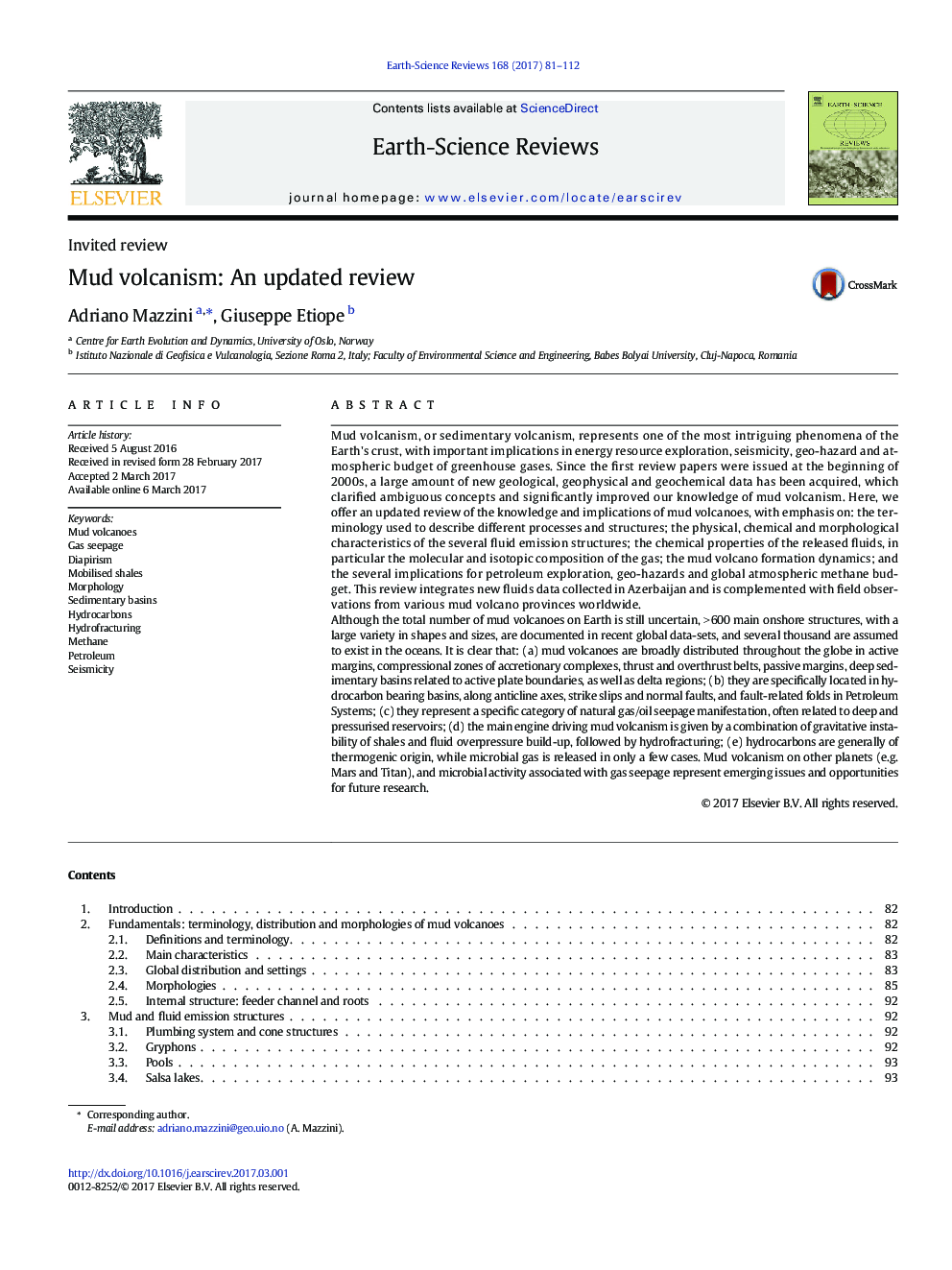| کد مقاله | کد نشریه | سال انتشار | مقاله انگلیسی | نسخه تمام متن |
|---|---|---|---|---|
| 5785112 | 1639934 | 2017 | 32 صفحه PDF | دانلود رایگان |
Mud volcanism, or sedimentary volcanism, represents one of the most intriguing phenomena of the Earth's crust, with important implications in energy resource exploration, seismicity, geo-hazard and atmospheric budget of greenhouse gases. Since the first review papers were issued at the beginning of 2000s, a large amount of new geological, geophysical and geochemical data has been acquired, which clarified ambiguous concepts and significantly improved our knowledge of mud volcanism. Here, we offer an updated review of the knowledge and implications of mud volcanoes, with emphasis on: the terminology used to describe different processes and structures; the physical, chemical and morphological characteristics of the several fluid emission structures; the chemical properties of the released fluids, in particular the molecular and isotopic composition of the gas; the mud volcano formation dynamics; and the several implications for petroleum exploration, geo-hazards and global atmospheric methane budget. This review integrates new fluids data collected in Azerbaijan and is complemented with field observations from various mud volcano provinces worldwide.Although the total number of mud volcanoes on Earth is still uncertain, >Â 600 main onshore structures, with a large variety in shapes and sizes, are documented in recent global data-sets, and several thousand are assumed to exist in the oceans. It is clear that: (a) mud volcanoes are broadly distributed throughout the globe in active margins, compressional zones of accretionary complexes, thrust and overthrust belts, passive margins, deep sedimentary basins related to active plate boundaries, as well as delta regions; (b) they are specifically located in hydrocarbon bearing basins, along anticline axes, strike slips and normal faults, and fault-related folds in Petroleum Systems; (c) they represent a specific category of natural gas/oil seepage manifestation, often related to deep and pressurised reservoirs; (d) the main engine driving mud volcanism is given by a combination of gravitative instability of shales and fluid overpressure build-up, followed by hydrofracturing; (e) hydrocarbons are generally of thermogenic origin, while microbial gas is released in only a few cases. Mud volcanism on other planets (e.g. Mars and Titan), and microbial activity associated with gas seepage represent emerging issues and opportunities for future research.
Journal: Earth-Science Reviews - Volume 168, May 2017, Pages 81-112
